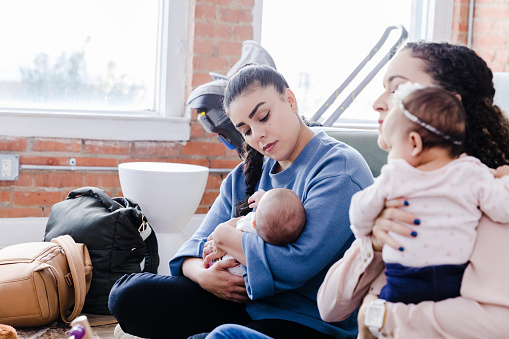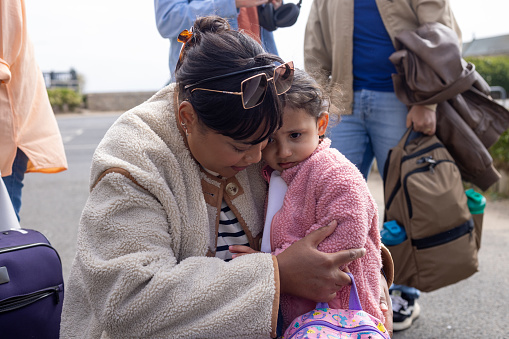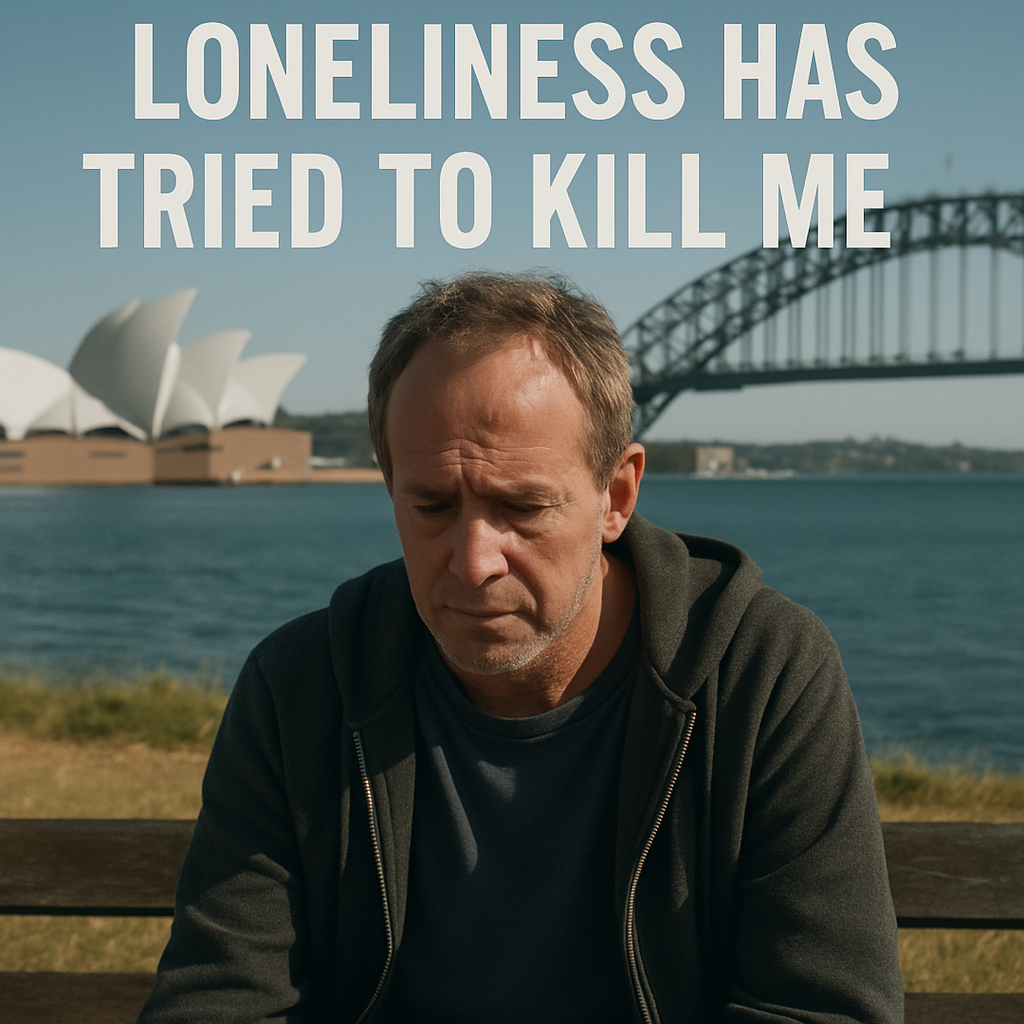New Narratives: The Structural Loneliness of Migrant Mothers

Through New Narratives, we’ll explore the multi-faceted nature of loneliness by sharing insights and stories from as many perspectives as possible, not only to help bridge the gap between isolation and connection but to also enrich our community’s understanding of loneliness.
Our latest narrative has been written By Silfana Nasri, a PhD candidate at the University of Surrey, where her research uses creative and art-based methodologies to explore loneliness and social connection among migrant women in the UK.
Building Bridges, Not Just “Welcoming”: The Structural Loneliness of Migrant Mothers
Ever felt lonely in a crowded room?
Now, imagine that room is an entire country. Imagine you are not just navigating small talk, but new rules, new systems, and a new language. And now, imagine doing it all while navigating motherhood, with a tiny human relying on you. For many mothers, being in a new place and away from familiar support caused psychological discomfort. However, this is not just “feeling sad.” It is a deep structural disconnection, and it is one of the most significant and misunderstood issues in our communities today.
In our hyper-connected world, one of the most significant yet often misread forms of distress is loneliness. Loneliness is not the same as being alone. It is the uncomfortable feeling that arises from a lack of meaningful connection. While the topic of loneliness is widely discussed in our society, the loneliness felt among migrant mothers is rarely discussed. My PhD research focuses on loneliness experienced by migrant women in the UK.
Upon examining this topic closely, it provides me with some insight into how women experience loneliness differently. In this article, I focus on migrant mothers and their experiences with loneliness, examining how it is shaped by social, economic, and political factors.

The Intersectionality of Identity, Motherhood, and Sense of Belonging in a New Place
For many mothers, migrating to a new country means leaving behind a vital community and support system. When they have a child in their new home, the hands they instinctively reach for—their mothers, their sisters, their best friends—are thousands of miles away. The experienced aunt who could calm a baby is now just a face on a screen, trying to help from a different time zone. This loss of a physical “village” is a common and painful source of loneliness.
This shared experience, however, is often where the similarities end. It is a critical mistake to view “migrant mothers” as a single, uniform group. As social scientists, we use the term “intersectionality” to understand how different aspects of a person’s identity—such as their race, class, education, immigration status, and ability—overlap to create vastly different realities. Motherhood and migration intersect in unique ways, and these intersecting factors mean one mother’s experience of loneliness can be fundamentally different from another’s, even if they share the same street.
The loneliness of a white, high-earning diplomat’s wife, for instance, is real. But it is not the same as the loneliness of an immigrant nurse who sends most of her salary to her family in her home country, and parenting her own children through a screen because she could not afford to bring them to the UK.
It is not the same as the loneliness of an international PhD student, juggling between her research, household chores, and raising a toddler. And it is certainly not the same as the loneliness of an asylum-seeking mother in temporary housing, whose feelings of loneliness and isolation are compounded by poverty, racism, trauma, and the profound uncertainty of her family’s future.
When we lump all these women together, we obscure the real problem: that for many, loneliness is a direct symptom of systemic issues like racism, professional “deskilling,” economic inequality, and hostile immigration policies.
Why Migrant Mothers’ Experiences of Loneliness Differ: Stories from the Field – Jasmine and Amanda
A powerful example of this is ‘Jasmine’ (a pseudonym), one of my research participants. She migrated to the UK as a ‘dependent’ on her husband’s student visa. She came to the UK with her daughter to follow her husband, who was pursuing a PhD at a UK university. Before migrating to the UK, she had a promising career in her home country. However, she quit her job in order to move to the UK. She expressed that her life in the UK is very isolating. During workdays, her husband attends the university, and their daughter goes to school, leaving her alone at home.
Jasmine attempted to break the isolation by re-entering the workforce, but it proved to be a challenging task. Her previous qualifications in her own country are not recognised by UK employers. The only jobs she could find were a series of entry-level, low-paying positions that did not align with her work experience and career aspirations.
Another dilemma is faced by ‘Amanda’ (a pseudonym). She has a school-age kid and a toddler. Back in her home country, she could manage to work because she had family support. When she could not pick up her kid, she could ask one of her siblings to do it for her. When she had to attend a networking event, she could ask her parents to take care of her children for a few hours. Since moving here, she has had to give up her career because she lacks the necessary support, and childcare is unaffordable for her.
Work, Identity, and the Trap of Structural Barriers
For many migrant mothers, work is far more than a pay check; it is a vital lifeline to professional identity, social integration, and a sense of self beyond their family role. Yet, the barriers are often structural. They may face the “deskilling” phenomenon, where their foreign qualifications go unrecognised, pushing them toward low-wage jobs.
They also confront the unaffordable cost and scarcity of formal childcare, all without the familial support network they would have had at home. This condition creates a catch-22 situation: the very thing that could provide connection and alleviate loneliness is often rendered inaccessible. It forces a skilled woman out of the workforce and locks them into a state of economic dependency and social isolation.

Building Bridges, Not Just “Welcoming”
We like to think that we are a welcoming society. But what if “welcoming” is not just not enough?
If the problems are structural, our solutions must be as well. The loneliness so many migrant women experience is not a personal failure to “join in.” It is a structural failure. It is the gap between a polite hello and the tangible, structural support needed to build a life. I am not saying that individual kindness is pointless. It is vital. It is a human gesture that makes an often-hostile system more bearable. We must do both: offer the individual human connection while simultaneously fighting to fix the systems that make that connection so difficult to achieve in the first place.
Tackling loneliness is not about “fixing” these women or showing them how to be “less lonely.” It is about taking down the walls that keep them alone in the first place. Mothers’ economic and social participation is impossible without a functioning social “scaffolding” for care.
We must fundamentally reframe childcare as essential public infrastructure, as vital as roads or healthcare. Treating it as a private, commodified “choice” is a direct policy decision that forces women out of the workforce. It is the bridge that allows a person to cross from the home into the public, professional, and social world.
From Kind Gestures to Systemic Change
While individual and community interventions matter, we should also advocate for state-level, systemic interventions. Building genuine bridges means interrogating the systems we take for granted. It requires us to ask uncomfortable questions.
Why are our public services, from healthcare to education, so often designed for a single, default “user” who speaks fluent English and instinctively understands the bureaucracy?
Why are professional qualifications routinely dismissed, forcing skilled engineers, teachers, and doctors into “deskilled” survival jobs? Is there any accessible route for them to participate professionally? These are not minor oversights; they are systemic failures that actively manufacture isolation.
It is also essential to push our government and politicians to invest in community and infrastructure. We need publicly funded, high-quality courses that are not only accessible but also include free, on-site childcare. This facility would remove the single most significant barrier to entry for most mothers. We also need more funding for culturally specific mental health services and tackling the digital divide so that a low-income mother is not cut off from the online world.

Loneliness as a Reflection of Society
The wellbeing of migrant mothers is not a niche, minority issue. It serves as a barometer for the health of our entire society. The loneliness we are witnessing is not a personal, psychological failing. It is a rational and predictable response to an irrational and often hostile set of systems. While welcoming matters, we also need to build accessible bridges where everyone has the tools, access, and chance to really belong.
Biography

Silfana Nasri
Silfana Nasri is a PhD candidate at the University of Surrey, where her research uses creative and art-based methodologies to explore loneliness and social connection among migrant women in the UK.
She brings a wealth of cross-sector experience, having worked in both academia and charitable organisations. Her expertise centres on gender and inclusion, mental health, psychosocial support, and community-based interventions in post-conflict and post-disaster settings.
Silfana actively puts her research into practice by leading a network that fosters connections for over 800 Indonesian doctoral students in the UK, and also organises a community group that meets regularly to share book reviews, creating a space for connection to tackle loneliness. When she is not working on her PhD, she is a painter, a yoga and pilates enthusiast, and an avid explorer of new cultures through food and conversations.





Responses